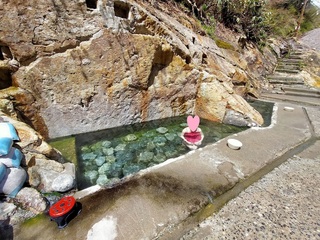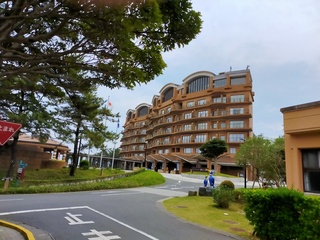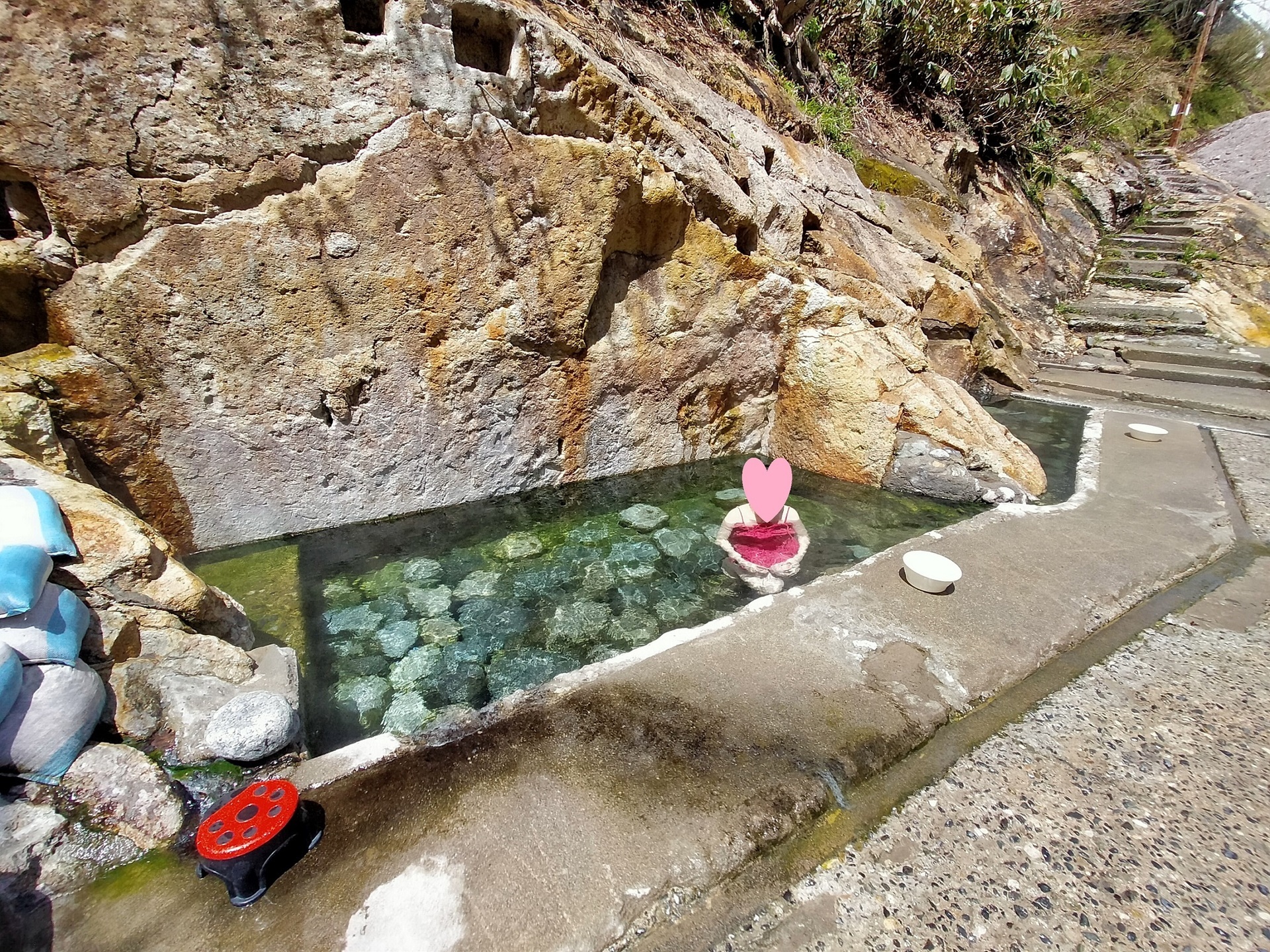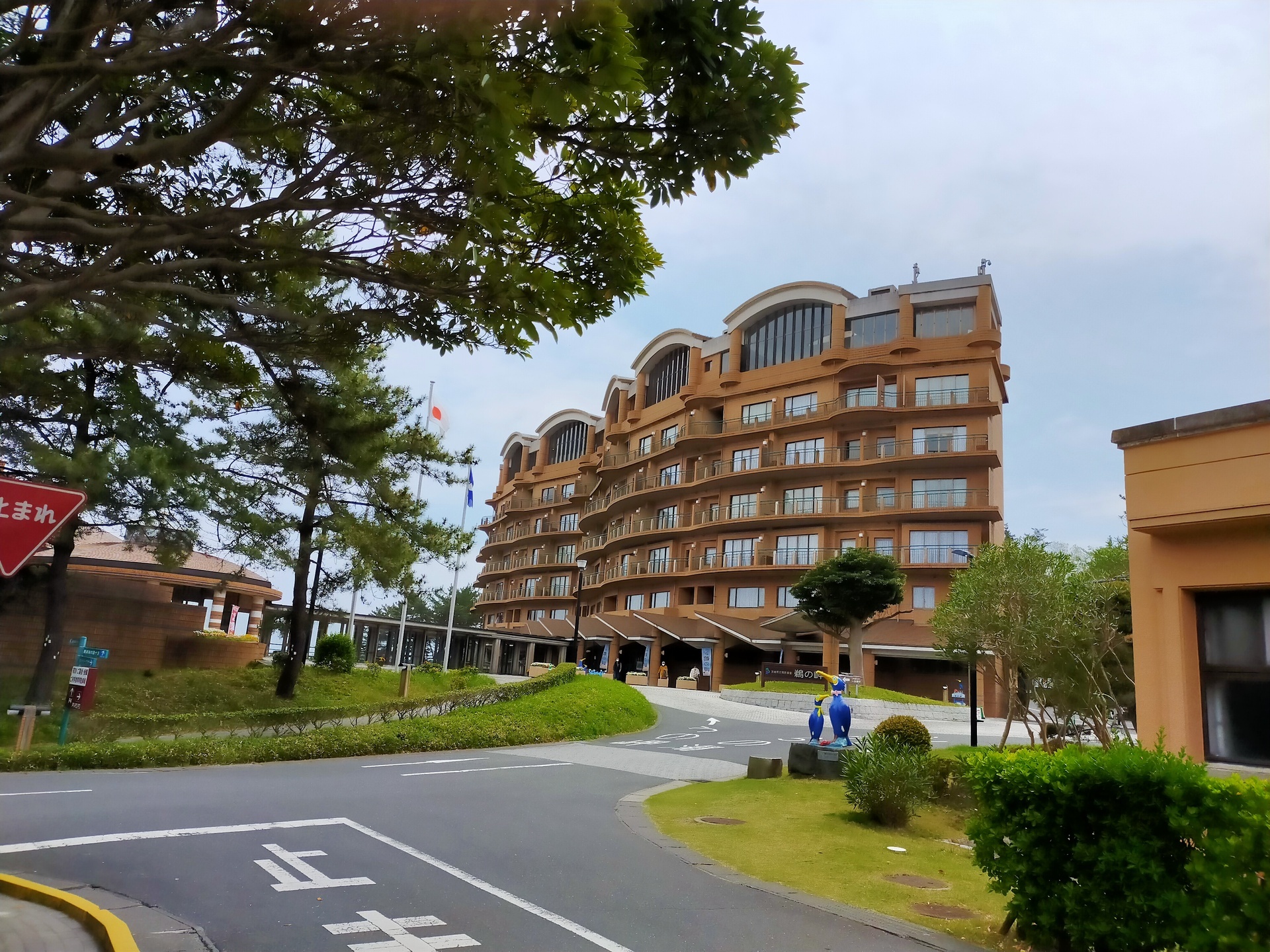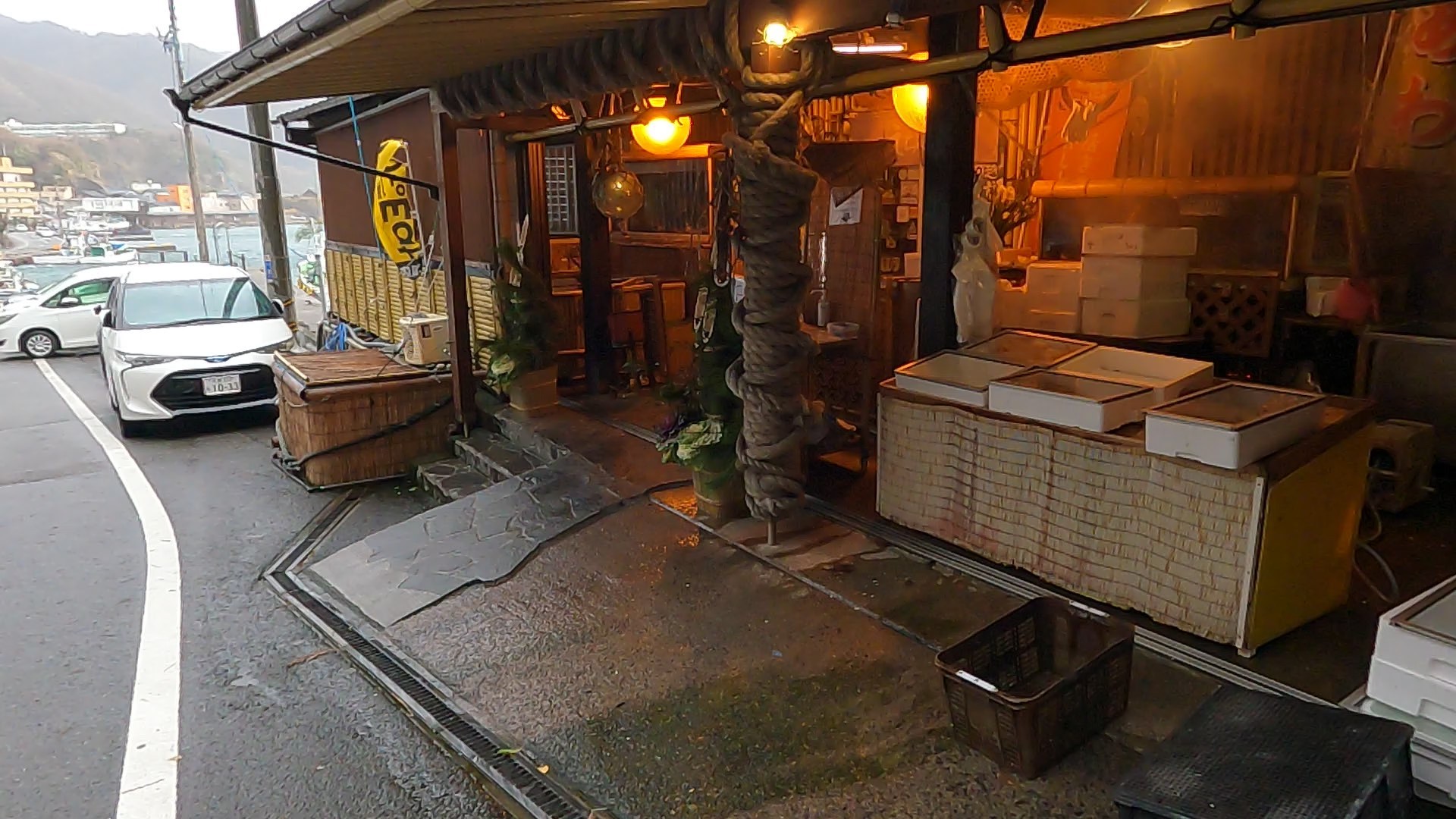新規記事の投稿を行うことで、非表示にすることが可能です。
2020年12月06日
Enjoy the spectacular open-air bath and autumn leaves at a hot spring inn in Iwate Prefecture-Osawa hot spring resort, where Kenji Miyazawa often visited-
Hanamaki City, Iwate Prefecture.
Here is a hot spring inn with a spectacular open-air bath that Kenji Miyazawa often visited.
The name of the inn is "Osawa Onsen".
It is a well-known inn for people who like hot springs.
This inn has three buildings built on a large site.
One is "Hot spring cure inn". As the name suggests, it is an inn where hot spring guests can stay cheaply for a long time, and there is a large kitchen for self-catering, but there is also a dining room that can be used for breakfast, lunch, and dinner, and you can enjoy various menus at a low price. The building was built 200 years ago! It is a wooden building.
Inside this "Hot spring cure inn", there is a mixed bathing open-air bath called "Osawa no Yu", which is very famous.
(From the official website of Osawa Onsen)
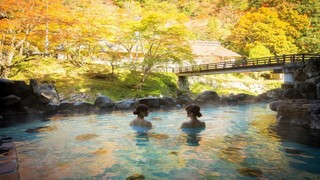
The other is Kikusuikan. This is a wooden building with a thatched roof of the Nanbu Clan. It is not possible to stay at this time, but it seems that the building was used by the Nanbu feudal lord during the Edo period.
The last is Sansuikaku ("Sansui" means Water from mountains,"kaku" means hotel), a pure Japanese-style inn with sophisticated modern architecture. Although it is connected to the "Hot spring cure inn" by a corridor, it is a fairly high-class hotel with a completely different atmosphere.
This time, I stayed at "Hot spring cure inn" for two nights during the autumn leaves season and was able to enjoy the wonderful autumn leaves in the mountains and the spectacular open-air bath.
By all means, I would like everyone to watch this inn by the video below.
・Dwelling place
181 Yuguchi Osawa, Hanamaki City, Iwate Prefecture
・Telephone
+81 - 198 - 25 - 2021
・by Train / Bus
Tokyo Station (Tohoku Shinkansen) ⇒ Morioka Station (Tohoku Main Line) ⇒ Hanamaki Station (bus) ⇒
Osawa Onsen
・by Car
15 minutes from "Hanamaki Minami IC" on the Tohoku Expressway (free parking)
・Highlights in the neighborhood・
Chusonji - Temple(YouTube)
・Video
☆ Notice
From my own experience, I believe it is very important for people to interact with each other at the individual level as a basis for international mutual understanding. Currently, international traffic of people has ceased due to the influence of COVID19, but after overcoming COVID19, I would like the people from foreign countries to come back to Japan and resume interacting with Japanese people.
With that wish in mind, I have created videos of unknown but very attractive destinations in Japan and posted them on YouTube.
If you agree with this purpose, I would be very happy if you could let people with the same aspirations or acquaintances overseas know.
Thank you very much.
PriorityPass



Here is a hot spring inn with a spectacular open-air bath that Kenji Miyazawa often visited.
The name of the inn is "Osawa Onsen".
It is a well-known inn for people who like hot springs.
This inn has three buildings built on a large site.
One is "Hot spring cure inn". As the name suggests, it is an inn where hot spring guests can stay cheaply for a long time, and there is a large kitchen for self-catering, but there is also a dining room that can be used for breakfast, lunch, and dinner, and you can enjoy various menus at a low price. The building was built 200 years ago! It is a wooden building.
Inside this "Hot spring cure inn", there is a mixed bathing open-air bath called "Osawa no Yu", which is very famous.
(From the official website of Osawa Onsen)

The other is Kikusuikan. This is a wooden building with a thatched roof of the Nanbu Clan. It is not possible to stay at this time, but it seems that the building was used by the Nanbu feudal lord during the Edo period.
The last is Sansuikaku ("Sansui" means Water from mountains,"kaku" means hotel), a pure Japanese-style inn with sophisticated modern architecture. Although it is connected to the "Hot spring cure inn" by a corridor, it is a fairly high-class hotel with a completely different atmosphere.
This time, I stayed at "Hot spring cure inn" for two nights during the autumn leaves season and was able to enjoy the wonderful autumn leaves in the mountains and the spectacular open-air bath.
By all means, I would like everyone to watch this inn by the video below.
・Dwelling place
181 Yuguchi Osawa, Hanamaki City, Iwate Prefecture
・Telephone
+81 - 198 - 25 - 2021
・by Train / Bus
Tokyo Station (Tohoku Shinkansen) ⇒ Morioka Station (Tohoku Main Line) ⇒ Hanamaki Station (bus) ⇒
Osawa Onsen
・by Car
15 minutes from "Hanamaki Minami IC" on the Tohoku Expressway (free parking)
・Highlights in the neighborhood・
Chusonji - Temple(YouTube)
・Video
☆ Notice
From my own experience, I believe it is very important for people to interact with each other at the individual level as a basis for international mutual understanding. Currently, international traffic of people has ceased due to the influence of COVID19, but after overcoming COVID19, I would like the people from foreign countries to come back to Japan and resume interacting with Japanese people.
With that wish in mind, I have created videos of unknown but very attractive destinations in Japan and posted them on YouTube.
If you agree with this purpose, I would be very happy if you could let people with the same aspirations or acquaintances overseas know.
Thank you very much.
PriorityPass
【このカテゴリーの最新記事】
-
no image
-
no image
-
no image
-
no image
-
no image
-
no image
-
no image
-
no image
-
no image
-
no image
-
no image
-
no image
-
no image
-
no image
-
no image
-
no image
-
no image
2020年11月25日
Although it goes against the purpose ..."CHUSONJI-Temple"
(Request to readers)
This blog was written to help people learn about Japanese real nature and culture that is not well known to foreigners. If there are people around you who are interested in Japan, please tell them about this blog.
This autumn, I went to "CHUSONJI-Temple", which I had been unable to go to for many years.
Because It was just a personal trip and it doesn't fit the purpose of my blog or YouTube channel, I was not thinking about posting an article of this temple.
However, I was so fascinated by the unique beauty of "CHUSONJI-Temple", which is a mixture of simplicity and gorgeousness that is different from the temples in Kyoto, that I couldn't help but want everyone to see it.
I didn't plan to upload it to YouTube, so I didn't take any videos and took only photos.
But if you like, please have a look.
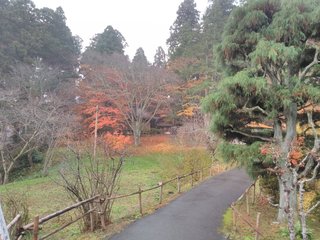
・Video(photos only)
☆ Notice
From my own experience, I believe it is very important for people to interact with each other at the individual level as a basis for international mutual understanding. Currently, international traffic of people has ceased due to the influence of COVID19, but after overcoming COVID19, I would like the people from foreign countries to come back to Japan and resume interacting with Japanese people.
With that wish in mind, I have created videos of unknown but very attractive destinations in Japan and posted them on YouTube.
If you agree with this purpose, I would be very happy if you could let people with the same aspirations or acquaintances overseas know.
Thank you very much.
ホテル予約最大16%割引 Booking.comカード


This blog was written to help people learn about Japanese real nature and culture that is not well known to foreigners. If there are people around you who are interested in Japan, please tell them about this blog.
This autumn, I went to "CHUSONJI-Temple", which I had been unable to go to for many years.
Because It was just a personal trip and it doesn't fit the purpose of my blog or YouTube channel, I was not thinking about posting an article of this temple.
However, I was so fascinated by the unique beauty of "CHUSONJI-Temple", which is a mixture of simplicity and gorgeousness that is different from the temples in Kyoto, that I couldn't help but want everyone to see it.
I didn't plan to upload it to YouTube, so I didn't take any videos and took only photos.
But if you like, please have a look.

・Video(photos only)
☆ Notice
From my own experience, I believe it is very important for people to interact with each other at the individual level as a basis for international mutual understanding. Currently, international traffic of people has ceased due to the influence of COVID19, but after overcoming COVID19, I would like the people from foreign countries to come back to Japan and resume interacting with Japanese people.
With that wish in mind, I have created videos of unknown but very attractive destinations in Japan and posted them on YouTube.
If you agree with this purpose, I would be very happy if you could let people with the same aspirations or acquaintances overseas know.
Thank you very much.
ホテル予約最大16%割引 Booking.comカード
2020年11月17日
When I got on the Suigun Line, I was surprised at the beautiful scenery.
(Request to readers)
This blog was written to help people learn about Japanese real nature and culture that is not well known to foreigners. If there are people around you who are interested in Japan, please tell them about this blog.
"Suigun Line"
A rural line that goes from Mito Station in Ibaraki Prefecture to Koriyama Station in Fukushima Prefecture.
To be honest, I rarely get on this route in my daily life.
The distance from Mito Station to Koriyama Station is over 140km, and the time is about 4 hours and 30 minutes.
Except for Mito Station and Koriyama Station, there are no stations that can be called major station.
But it is a good line to know what the ordinary countryside of Japan looks like.
It ’s really nothing strange, it ’s like everywhere in Japan.
You can see the Japanese normal houses, ironworks and shopping malls from the windows of train.
And an electric shop is standing up.
The train leaves Mito Station and arrives at "Hitachi-Omiya Station" in about 35 minutes. Up to this point
Some areas can still be called towns.
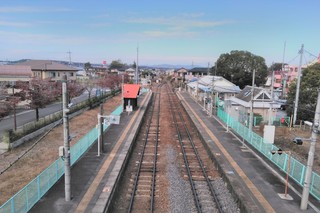
When you leave Hitachi-Omiya Station, you will gradually enter an area rich in nature and the scenery will improve.
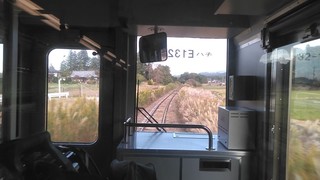
Going further, after passing "Nakafunyu Station", the scenery changes at once.
A valley created by the Kuji River appears.

At this point, it's no longer a half-baked countryside landscape, but truly surrounded by nature.
The scenery is very beautiful.
Normally, no one gets on the train from Mito Station to Koriyama Station.
During the fall foliage season, most passengers get off the train at Fukuroda Station to head to Fukuroda Falls which is known as one of the 3 large waterfalls.
The autumn colors of Fukuroda Falls are spectacular and worth a visit.
If you take the Limited express of Joban Line from Tokyo Station to Mito Station and the Local train of Suigun Line from Mito Station to Fukuroda Station, you will arrive in about 2 hours and 30 minutes at the earliest.
It's possible to take a day trip from Tokyo.
There are several hotels with hot springs in the area that It is also possible to stay and enjoy the autumn leaves.
Highlights in the neighborhood
・ Moon-waiting waterfall (You Tube)
・ Momiji Temple (Eigenji Temple) (You Tube)
・ Daigo Cafe (You Tube)
・ Around Fukuroda Falls (You Tube)
・ Fukuroda Onsen
・ Tsukioresan (hiking)
Video
The valley of the Kuji River is very beautiful.
【じゃらん】国内25,000軒の宿をネットで予約OK!2%ポイント還元!


This blog was written to help people learn about Japanese real nature and culture that is not well known to foreigners. If there are people around you who are interested in Japan, please tell them about this blog.
"Suigun Line"
A rural line that goes from Mito Station in Ibaraki Prefecture to Koriyama Station in Fukushima Prefecture.
To be honest, I rarely get on this route in my daily life.
The distance from Mito Station to Koriyama Station is over 140km, and the time is about 4 hours and 30 minutes.
Except for Mito Station and Koriyama Station, there are no stations that can be called major station.
But it is a good line to know what the ordinary countryside of Japan looks like.
It ’s really nothing strange, it ’s like everywhere in Japan.
You can see the Japanese normal houses, ironworks and shopping malls from the windows of train.
And an electric shop is standing up.
The train leaves Mito Station and arrives at "Hitachi-Omiya Station" in about 35 minutes. Up to this point
Some areas can still be called towns.

When you leave Hitachi-Omiya Station, you will gradually enter an area rich in nature and the scenery will improve.

Going further, after passing "Nakafunyu Station", the scenery changes at once.
A valley created by the Kuji River appears.

At this point, it's no longer a half-baked countryside landscape, but truly surrounded by nature.
The scenery is very beautiful.
Normally, no one gets on the train from Mito Station to Koriyama Station.
During the fall foliage season, most passengers get off the train at Fukuroda Station to head to Fukuroda Falls which is known as one of the 3 large waterfalls.
The autumn colors of Fukuroda Falls are spectacular and worth a visit.
If you take the Limited express of Joban Line from Tokyo Station to Mito Station and the Local train of Suigun Line from Mito Station to Fukuroda Station, you will arrive in about 2 hours and 30 minutes at the earliest.
It's possible to take a day trip from Tokyo.
There are several hotels with hot springs in the area that It is also possible to stay and enjoy the autumn leaves.
Highlights in the neighborhood
・ Moon-waiting waterfall (You Tube)
・ Momiji Temple (Eigenji Temple) (You Tube)
・ Daigo Cafe (You Tube)
・ Around Fukuroda Falls (You Tube)
・ Fukuroda Onsen
・ Tsukioresan (hiking)
Video
The valley of the Kuji River is very beautiful.
【じゃらん】国内25,000軒の宿をネットで予約OK!2%ポイント還元!
2020年11月08日
DAIGO CAFE, a nationally registered tangible cultural property coffee shop, working hard in a rural town
(Request to readers)
This blog was written to help people learn about Japanese real nature and culture that is not well known to foreigners. If there are people around you who are interested in Japan, please tell them about this blog.
DAIGO CAFE in Daigo Town, Ibaraki Prefecture.
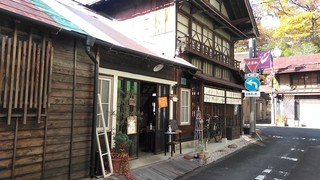
Daigo Town is a mountainous super-country town in the northernmost part
of Ibaraki Prefecture, on the prefectural border with Fukushima Prefecture.
Fukuroda Falls is famous, but nothing else is famous nationwide.
The autumn leaves are very beautiful, and I would like everyone to visit.

Hitachi-Daigo Station on the JR Suigun Line is about 3 hours from Tokyo via Mito
Station.
When you get off the train and go out in front of the station, you will find the Steam
Locomotive that was actually used in the past. A typical country town on display,
and nothing else.
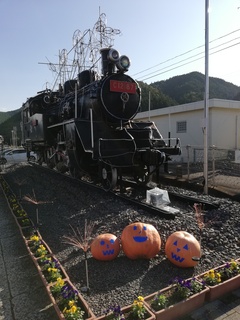
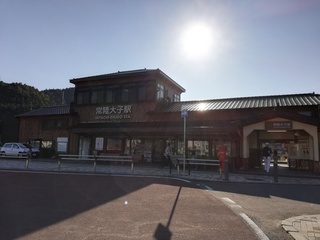
However, as you walk along the road in front of this station, you will find a
fashionable private shops. All of them use old buildings as they are.
It creates an indescribable atmosphere.
Surprisingly, this rural town has many buildings designated as a National
Registered Cultural Property .
All of them are as follows.
・ Former Kurosawa Junior High School
・ Former Higuchi Hospital Building
・ Former Uwaoka Elementary School (famous as a location for TV dramas)
・ Former Hatsubara Elementary School
・ Former Saigane Elementary School
・ Former Asakawa Elementary School
・ Former Makinoji Elementary School
・ Former Sotoike Kimono store (Kimono)
・ Former Daigo Bank Head Office
And the DAIGO CAFE building that I visited this time
is one of them, and it is 100 years old.
The owner himself took a year to build the above private house while keeping
the retro atmosphere.
It is a renovated old folk house cafe.
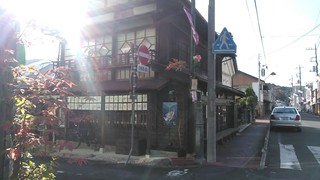
The menu is pasta, curry using Oku Kuji army chicken, omelet rice, and
Daigo Sweets etc.
I ate a delicious curry.

The omelet rice made with Oku Kuji army chicken eggs that my wife ate was
also excellent.
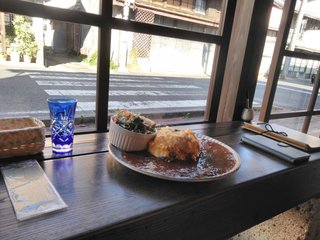
I really want to support the owners and staffs who run such fashionable coffee shops
in such a rural town.
By the way, in this town of Daigo, the people who had the same aspirations as the owner of
DAIGO CAFE form a group called "Daigo Cafe Net" .
It seems that they are developing another fashionablecoffee shops, so I will visit the others
in the future and I want to introduce you all of them.
The website of Daigo Cafe Net is here .
・Dwelling place
688 Daigo, Daigo Town, Kuji District, Ibaraki Prefecture
・by Train / Bus
Tokyo Station (JR Joban Line approx. 1 hour 15 minutes) ⇒ Mito Station
(JR Suigun Line approx. 1 hour 40 minutes) ⇒ Hitachi-Daigo Station
(about 5-10 minutes on foot) ⇒ DAIGO CAFE
・by Car
From Joban Expressway Mito IC, Route 118 (about 1 hour and 20 minutes)
Parking lot near Daigo Town Hall (free), etc.
・Highlights in the neighborhood
Walking around Hitachi-Daigo Station (river flow, mountain greenery, autumn leaves)
Eigenji (Momiji)(You Tube)
Tsukimachi Waterfall(You Tube)
Fukuroda Falls
・Video when visiting DAIGO CAFE
I took it very hard. Please take a look.


This blog was written to help people learn about Japanese real nature and culture that is not well known to foreigners. If there are people around you who are interested in Japan, please tell them about this blog.
DAIGO CAFE in Daigo Town, Ibaraki Prefecture.

Daigo Town is a mountainous super-country town in the northernmost part
of Ibaraki Prefecture, on the prefectural border with Fukushima Prefecture.
Fukuroda Falls is famous, but nothing else is famous nationwide.
The autumn leaves are very beautiful, and I would like everyone to visit.

Hitachi-Daigo Station on the JR Suigun Line is about 3 hours from Tokyo via Mito
Station.
When you get off the train and go out in front of the station, you will find the Steam
Locomotive that was actually used in the past. A typical country town on display,
and nothing else.


However, as you walk along the road in front of this station, you will find a
fashionable private shops. All of them use old buildings as they are.
It creates an indescribable atmosphere.
Surprisingly, this rural town has many buildings designated as a National
Registered Cultural Property .
All of them are as follows.
・ Former Kurosawa Junior High School
・ Former Higuchi Hospital Building
・ Former Uwaoka Elementary School (famous as a location for TV dramas)
・ Former Hatsubara Elementary School
・ Former Saigane Elementary School
・ Former Asakawa Elementary School
・ Former Makinoji Elementary School
・ Former Sotoike Kimono store (Kimono)
・ Former Daigo Bank Head Office
And the DAIGO CAFE building that I visited this time
is one of them, and it is 100 years old.
The owner himself took a year to build the above private house while keeping
the retro atmosphere.
It is a renovated old folk house cafe.

The menu is pasta, curry using Oku Kuji army chicken, omelet rice, and
Daigo Sweets etc.
I ate a delicious curry.

The omelet rice made with Oku Kuji army chicken eggs that my wife ate was
also excellent.

I really want to support the owners and staffs who run such fashionable coffee shops
in such a rural town.
By the way, in this town of Daigo, the people who had the same aspirations as the owner of
DAIGO CAFE form a group called "Daigo Cafe Net" .
It seems that they are developing another fashionablecoffee shops, so I will visit the others
in the future and I want to introduce you all of them.
The website of Daigo Cafe Net is here .
・Dwelling place
688 Daigo, Daigo Town, Kuji District, Ibaraki Prefecture
・by Train / Bus
Tokyo Station (JR Joban Line approx. 1 hour 15 minutes) ⇒ Mito Station
(JR Suigun Line approx. 1 hour 40 minutes) ⇒ Hitachi-Daigo Station
(about 5-10 minutes on foot) ⇒ DAIGO CAFE
・by Car
From Joban Expressway Mito IC, Route 118 (about 1 hour and 20 minutes)
Parking lot near Daigo Town Hall (free), etc.
・Highlights in the neighborhood
Walking around Hitachi-Daigo Station (river flow, mountain greenery, autumn leaves)
Eigenji (Momiji)(You Tube)
Tsukimachi Waterfall(You Tube)
Fukuroda Falls
・Video when visiting DAIGO CAFE
I took it very hard. Please take a look.
2020年11月07日
Oku Kuji, where the autumn leaves are amazing
(Request to readers)
This blog was written to help people learn about Japanese real nature and culture that is not well known to foreigners. If there are people around you who are interested in Japan, please tell them about this blog.
"Oku kuji"
Northern part of Ibaraki prefecture. A mountainous area on the prefectural border with Fukushima Prefecture.
Fukuroda Falls is known, but other than that, it is not well known.
The JR Suigun Line that connects Mito to Koriyama. I don't usually use it, but I recommend it in autumn.
When viewed from the train window of the local line, the wonderful scenery of yellow and crimson continues endlessly.
The view of the mountain stream when crossing the iron bridge is also wonderful.

If you walk along the river from Hitachi-Daigo Station, you will reach "Eigenji Temple".
It's known as "Maple Temple".
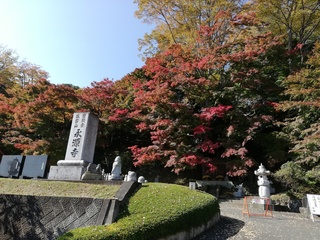
The approach and precincts are beautifully arranged, and the autumn leaves that are folded over and over are very refreshing.
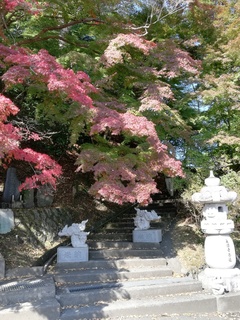
It seems to be relatively well known in Ibaraki prefecture, but it is almost unknown nationwide.
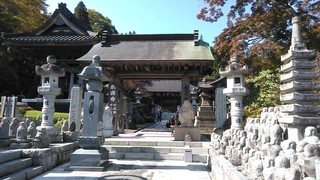
However, I want you to go there once.
Here you can see the original scenery of Japan and the wonderful autumn colors.
・Dwelling place
1571 Daigo, Daigo-cho, Kuji-gun, Ibaraki Prefecture
・by Train / Bus
Tokyo Station (JR Joban Line about 1 hour 15 minutes) ⇒ Mito Station (JR Mizugun Line about 1 hour 40 minutes) ⇒ Hitachi-Daigo Station (about 15 minutes on foot) ⇒ Eigenji
・by Car
From Joban Expressway Mito IC, Route 118 (about 1 hour and 20 minutes)
Parking lot near Daigo Town Hall (free)
・Worship fee
free
・Video of visiting Daigo Town / Eigenji Temple
I took it very hard. Please take a look.
This blog was written to help people learn about Japanese real nature and culture that is not well known to foreigners. If there are people around you who are interested in Japan, please tell them about this blog.
"Oku kuji"
Northern part of Ibaraki prefecture. A mountainous area on the prefectural border with Fukushima Prefecture.
Fukuroda Falls is known, but other than that, it is not well known.
The JR Suigun Line that connects Mito to Koriyama. I don't usually use it, but I recommend it in autumn.
When viewed from the train window of the local line, the wonderful scenery of yellow and crimson continues endlessly.
The view of the mountain stream when crossing the iron bridge is also wonderful.

If you walk along the river from Hitachi-Daigo Station, you will reach "Eigenji Temple".
It's known as "Maple Temple".

The approach and precincts are beautifully arranged, and the autumn leaves that are folded over and over are very refreshing.

It seems to be relatively well known in Ibaraki prefecture, but it is almost unknown nationwide.

However, I want you to go there once.
Here you can see the original scenery of Japan and the wonderful autumn colors.
・Dwelling place
1571 Daigo, Daigo-cho, Kuji-gun, Ibaraki Prefecture
・by Train / Bus
Tokyo Station (JR Joban Line about 1 hour 15 minutes) ⇒ Mito Station (JR Mizugun Line about 1 hour 40 minutes) ⇒ Hitachi-Daigo Station (about 15 minutes on foot) ⇒ Eigenji
・by Car
From Joban Expressway Mito IC, Route 118 (about 1 hour and 20 minutes)
Parking lot near Daigo Town Hall (free)
・Worship fee
free
・Video of visiting Daigo Town / Eigenji Temple
I took it very hard. Please take a look.
